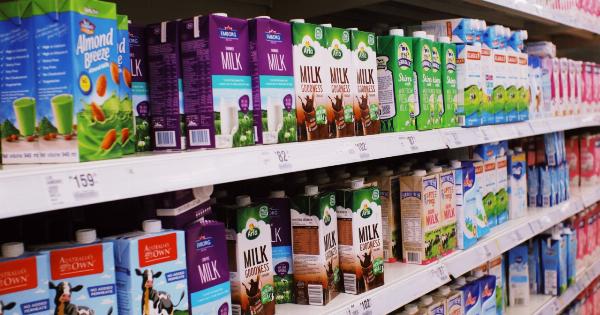Dairy products are a staple in many households. They are used in baking, cooking, and consumed on their own. However, for some people, consuming dairy products can lead to uncomfortable symptoms such as bloating, gas, and diarrhea.
This phenomenon is known as lactose intolerance, and it affects millions of people worldwide.
What is Lactose Intolerance?
Lactose intolerance is a condition where the body is unable to digest lactose, a type of sugar found in milk and milk products.
This happens because the body does not produce enough lactase, the enzyme needed to break down lactose into simpler sugars that can be absorbed by the body.
When lactose reaches the large intestine undigested, it is fermented by the bacteria in the gut, leading to the production of gas and other byproducts that can cause discomfort and pain.
The severity of the symptoms varies from person to person, and some people may be able to tolerate small amounts of lactose without any problems.
Symptoms of Lactose Intolerance
The symptoms of lactose intolerance can be unpleasant and may include:.
- Bloating
- Gas
- Abdominal pain
- Diarrhea
Diagnosing Lactose Intolerance
If you suspect that you have lactose intolerance, it is important to seek a proper diagnosis.
Your doctor may recommend a lactose tolerance test, which involves drinking a liquid containing a high amount of lactose and measuring the amount of hydrogen in your breath. When lactose is not properly digested, it produces hydrogen, which can be detected in the breath.
Other tests may include a blood test to measure the levels of glucose in the blood after consuming lactose or a stool test to check for the presence of undigested lactose in the stool.
Managing Lactose Intolerance
While there is no cure for lactose intolerance, there are ways to manage the condition and reduce the symptoms. One of the most effective ways is to avoid or reduce the consumption of lactose-containing foods.
However, this may not be practical or desirable for some people, especially if they enjoy dairy products. In such cases, lactase supplements can be taken to help break down the lactose and reduce the symptoms.
It is also important to note that different dairy products contain different amounts of lactose. For example, hard cheeses such as cheddar and Swiss cheese contain very little lactose and may be better tolerated than milk or ice cream.
The Bottom Line
Lactose intolerance is a common condition that can cause uncomfortable symptoms such as bloating, gas, and diarrhea. However, it can be effectively managed by reducing the consumption of lactose-containing foods or taking lactase supplements.
With a little bit of planning and preparation, individuals with lactose intolerance can enjoy a varied and healthy diet.






























